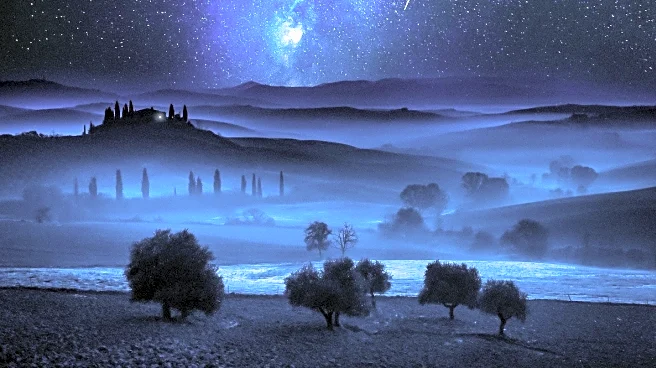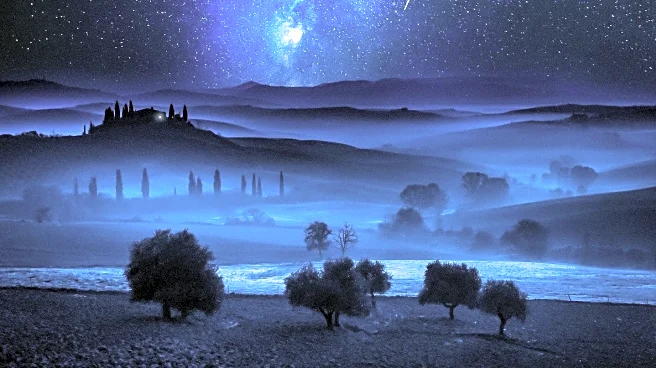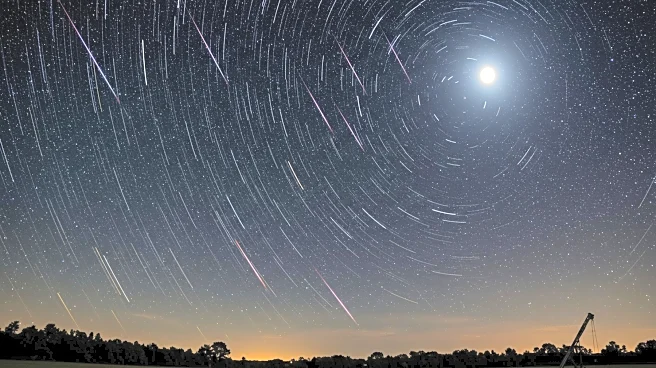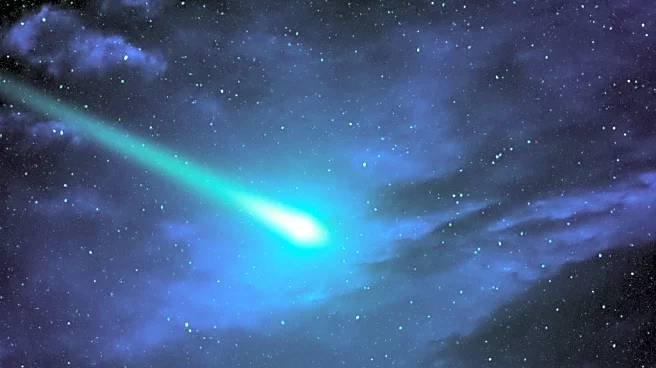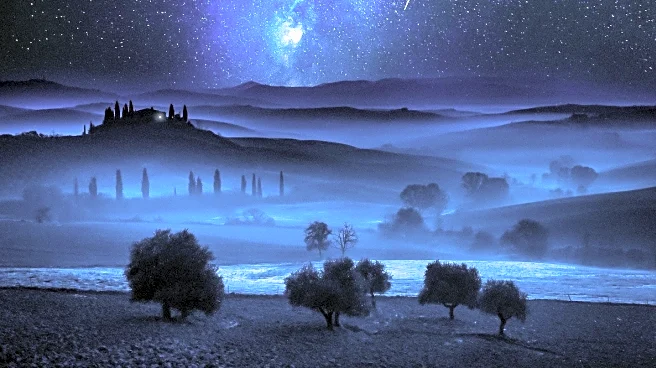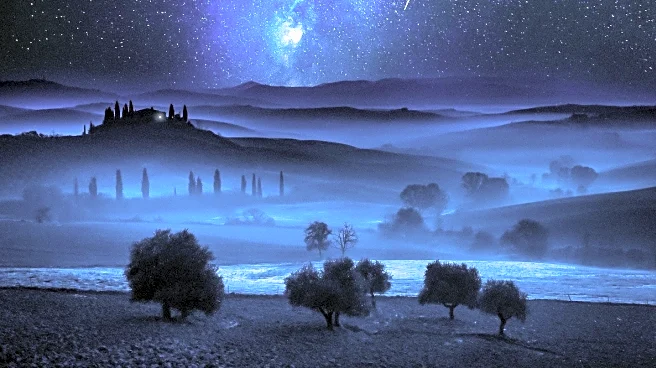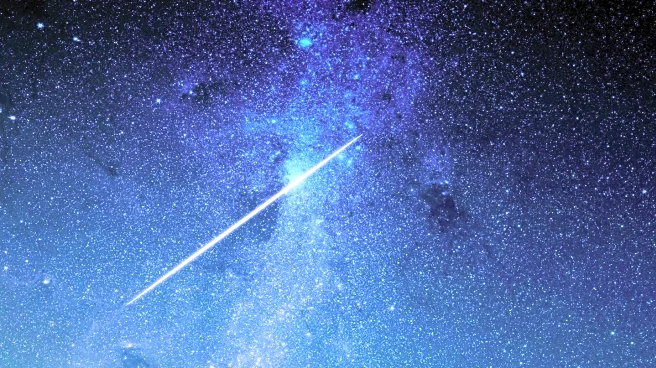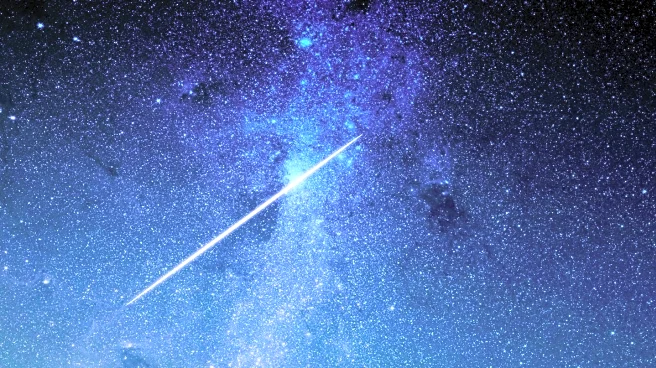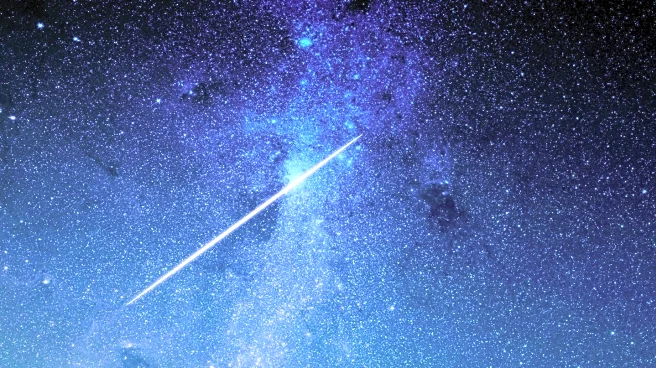What's Happening?
The Perseid meteor shower reached its peak on August 12-13, 2025, providing a dazzling display of shooting stars visible to skywatchers worldwide. The Perseids occur annually as Earth passes through debris left by comet 109P/Swift-Tuttle. Despite the presence of a waning gibbous moon, which brightened the night sky, many bright meteors were visible. Photographers captured stunning images of meteors against auroras and landscapes, showcasing the beauty of this celestial event. The Perseids typically produce 50 to 100 meteors per hour at their peak, originating from the constellation Perseus.
Why It's Important?
The Perseid meteor shower is one of the most anticipated astronomical events, attracting stargazers and photographers globally. It offers a unique opportunity to observe meteors and auroras, contributing to public interest in astronomy and science. The event also provides valuable data for scientists studying meteor showers and their impact on Earth's atmosphere. The visibility of meteors despite lunar interference highlights the shower's intensity and the potential for future observations under optimal conditions.
